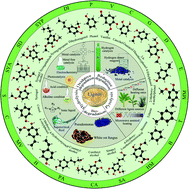Review on the preparation of fuels and chemicals based on lignin
Abstract
Lignin is by far the most abundant natural renewable aromatic polymer in nature, and its reserves are second only to cellulose. In addition to the rich carbon content, the structure of lignin contains functional groups such as benzene rings, methoxyl groups, and phenolic hydroxyl groups. Lignin degradation has become one of the high value, high quality and high efficiency methods to convert lignin, which is of great significance to alleviating the current energy shortage and environmental crisis. This article introduces the hydrolysis methods of lignin in acidic, alkaline, ionic liquids and supercritical fluids, reviews the heating rate, the source of lignin species and the effects of heating rate on the pyrolysis of lignin, and briefly describes the metal catalysis, oxidation methods such as electrochemical degradation and photocatalytic oxidation, and degradation reduction methods using hydrogen and hydrogen supply reagents. The lignin degradation methods for the preparation of fuels and chemicals are systematically summarized. The advantages and disadvantages of different methods, the selectivity under different conditions and the degradation efficiency of different catalytic combination systems are compared. In this paper, a new approach to improve the degradation efficiency is envisioned in order to contribute to the efficient utilization and high value conversion of lignin.



 Please wait while we load your content...
Please wait while we load your content...